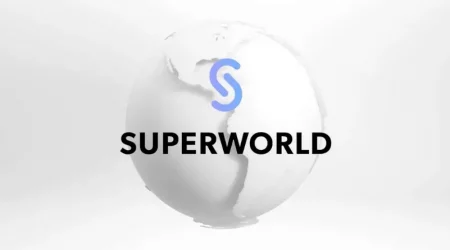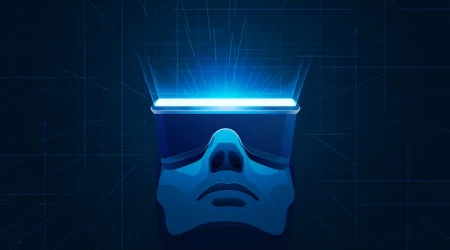What will be the impact of metaverse on NFTs and crypto?
Table of Contents
Four Ways the Metaverse Will Affect Crypto and NFTs
The development of the metaverse is only just beginning, but it is set to develop and evolve as virtual reality and the Internet has become more mainstream. And as blockchain and the NFT initiative expand, so will the use of metaverse. NFT ownership will create a new world of possibilities in the metaverse.
The metaverse is the next evolution of the internet. It is a persistent virtual space in which people interact with each other as 3D avatars. Blockchain technology may serve as the backbone of the metaverse, providing a universal and interoperable platform for NFT assets. This is a significant development, notably since Facebook recently announced plans to create such a space. But before we can see this development, we must wait and see how it develops.
Blockchain technology
Next-generation metaverses demonstrate the emergence of a decent society, with individuals settling the land, exchanging goods, and asserting ownership rights. To establish a functional society, however, a functioning economy is essential. A vital feature of a metaverse economy is the authentication of digital properties, which facilitates free travel and trade. However, the metaverse has several challenges.
First, blockchain will require massive computing resources for the metaverse. Since each participant must share the resources of others, it will increase transaction costs. Furthermore, the need for privacy will decrease. As a result, future-generation blockchains must address this problem. While the integration of blockchain with metaverse is still at an early stage, it is evident that it will lead to new opportunities in the industry.
Second, the impact of the Metaverse on the NFTs and crypto market will be radically altered. The Metaverse will make NFTs and crypto necessary. While these two technologies are not yet mature, they are both being developed to transform physical worlds into virtual ones. A successful Metaverse will allow crypto and NFTs to become necessary for everyday life. And in that time, NFTs will continue to make their way to the mass market.
NFTs
The metaverse has already created many crossovers between cryptocurrency and NFTs. For example, MetaKovan recently acquired the Beeple 20 Collection for $2.2 million and went on to build museums in three metaverses. The company also sold 10 million B.20 tokens. While these are all relatively early development stages, they show how the future metaverse may work.
NFTs could be a key concept for a new ecosystem in the future. These technologies could make it possible for people to access the metaverse, and they could reshape its basic design. This could disrupt social network precedents and transaction patterns. And with the emergence of blockchain technology, these new digital environments can be interoperable and versatile. This new technology could also help develop new ways to interact with other participants.
The impact of metaverse on NFTs and crypto is likely to be significant, especially as blockchain-based virtual environments are rapidly becoming a more critical part of everyday life. In the virtual world of Decentraland, users can acquire real estate, such as homes and businesses, by using NFTs. By using blockchain to prove ownership, NFTs can allow users to develop virtual real estate and sell it for profit. Metaverse initiatives can also enable users to generate passive income by renting their land out to others for a fee.
The metaverse is the next evolution of the internet. It is a persistent virtual space in which people interact with each other as 3D avatars. Blockchain technology may serve as the backbone of the metaverse, providing a universal and interoperable platform for NFT assets. This is a significant development, notably since Facebook recently announced plans to create such a space.
Digital scarcity
The blockchain has the best combination of desirable monetary characteristics: it is mathematically decentralized, has a fixed supply, and offers no room for inflation. Furthermore, the cost of production and issuance is unchangeable. The blockchain is likely to lean heavily on bitcoin. This is good news for NFTs and crypto. But it also means that the blockchain may not be the best choice for the metaverse.
The impact of the metaverse on NFTs and crypto will be more evident if we consider the following examples. For example, the “Into the Metaverse” project was launched by Nike, a sportswear manufacturer. The project’s goal is to build a virtual world where people can buy and sell digital sneakers without obtaining permission or approval. The idea is similar to v-bucks in Fortnite, a virtual currency that can be resold. Adidas previously collaborated with online gaming platform Roblox and sold digital real estate in the “Sandbox.” It will launch the virtual world in November 2021, so there is a good chance that the general public will adopt this technology.
Read More: How Will the Metaverse Impact Our Day-To-Day Lives?
Economic potential
The economic potential of the metaverse has attracted considerable attention recently. Citi analysts see great potential in extended reality, with a total user base of 5 billion. However, that estimate includes the mobile phone user base. The number is expected to be closer to one billion. That’s why the metaverse will attract a significant amount of investment. Ultimately, it will be a win-win situation for all stakeholders.
For example, in the prototype next-generation metaverse, individuals settle the land, interact, exchange goods, and assert ownership rights. These individuals create a functioning economy, and these digital properties can be traded on NFT marketplaces, with in-world investments commanding real-world values. By incorporating these aspects, the metaverse’s economy will be able to serve as the foundation for the virtual society.
Interoperable games
When we talk about the metaverse, we usually think of how virtual worlds connect and interact. This is particularly true of crypto and NFTs, which are inextricably linked. These technologies are crucial to creating a unified experience for both creators and players. This will allow the seamless transfer of 3D NFT assets and enable their exploration and interaction across different infrastructures.
The development of blockchain and cryptocurrency-based digital environments has led to unprecedented growth in the gaming industry. In addition, distributed ledger technology creates a digital ownership backbone and a universal state layer. This has sparked speculative interest in metaverse projects. As a result, companies like Nvidia and Microsoft have announced investments in this virtual environment.
The gaming industry is one of the first to recognize the economic potential of NFTs. Many popular brands now sell a virtual version of their products before the actual products are released. NFTs allow brands to engage their audiences; they also help them increase their popularity. This phenomenon is also expected to be an attractive opportunity for luxury fashion brands, which recently started using NFTs in their advertisements.




Leave a Reply